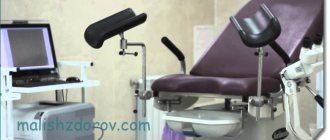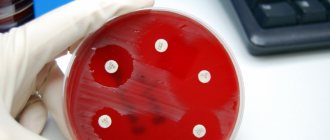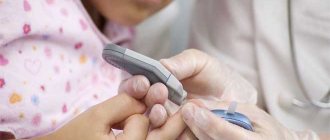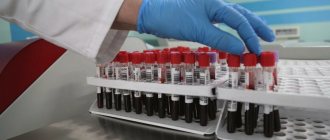Indications for analysis
The main purpose of the analysis is to identify the presence of harmful microorganisms that provoke the inflammatory process.
The diagnostician may prescribe the patient to donate blood for microbiological testing in the following cases:
- if the patient suffers from specific symptoms, but doctors for a long time cannot determine what is the primary source of the pathological process;
- the physician assumes the presence of a septic infection in the patient;
- the presence of complications caused by improper surgical intervention;
- placing a catheter in internal organs for a long time;
- a person periodically suffers from high body temperature, but doctors cannot determine what causes such a reaction in the body;
- the presence in the body of an implant that is in direct contact with the biological media of the body.
The absolute indication for testing behavior is the presence of artificial myocardial valves. To obtain a reliable analysis result, you will have to wait at least 10 days, since the germination of pathogenic microorganisms will take several days.
Experts warn that the speed of this process depends on the type of pathogen. It is worth noting that after collecting biomaterial, many patients are prescribed antibiotics (based on the presenting symptoms), but choosing a more competent and optimal treatment regimen is possible only after receiving hemotest data.
In addition, the indication for prescribing a blood culture (this is synonymous with a blood test for sterility) is the existence of special risk factors that can lead to the spread of infection into the blood. This is availability:
- permanent bladder catheter;
- intravenous catheters or shunts, for example in patients on chronic hemodialysis;
- a risk factor is extensive abdominal operations, and especially repeated and multiple ones, for example, staged skin grafts in a burn surgery clinic;
Long-term treatment with antibiotics also reduces the body's defenses and contributes to the emergence of resistant strains of microorganisms, which can be quite persistent. Therefore, long-term treatment with antimicrobial agents, which does not produce results, is also an indication for a blood test for sterility.
https://www.youtube.com/watch?v=_t2qBdtNnjc
Also, indications for this study are the results of a blood test, for example, toxic granularity of neutrophils, especially against the background of clinical sepsis, severe neutropenia and some other research results.
Currently, blood culture for sterility, or blood culture, is the “gold standard” for diagnosing septic conditions. In addition, the analysis can reveal not only the presence of microorganisms and bacteria, but also fungi in the bloodstream, so a blood test for sterility can also diagnose fungal sepsis.
The main indication for this type of analysis is the need to identify pathogenic microbes in the blood.
In a healthy state, the blood should be sterile and free of pathogenic bacteria.
But, for example, in the case of surgical interventions, protracted illnesses or when the body’s protective functions are weakened, these bacteria can multiply uncontrollably and cause significant harm to humans.
Therefore, for example, people with HIV need to undergo such examinations periodically for preventive purposes.
For example, it is not uncommon for people with immunodeficiency to become carriers of Mycobacterium tuberculosis, precisely because the body is unable to cope with external attacks on its own, while a person with an unimpaired immune system can cope well with such difficulties.
Some bacteria are difficult to diagnose and can only be detected through repeated studies (Staphylococcus epidermidis).
It is recommended to donate blood for testing before undergoing the prescribed course of therapy, so that the results of treatment are not distorted by the influence of pathogenic microorganisms.
Preparing for the study
It is recommended to donate blood on an empty stomach
It is advisable to donate blood for research on an empty stomach, but if there are emergency indications, it can be taken regardless of food intake. To exclude a false positive result caused by short-term bacteremia, it is not recommended to brush your teeth before the test.
To increase the accuracy of the study, it is better to donate blood before starting antibiotic treatment. In cases where it is impossible to stop taking the medication, blood is donated before taking the next dose of the antibiotic (that is, after a maximum break in treatment).
Efficiency of the sterility test
Every person wants to have good health and know that he is not a carrier of any infection. Sterility testing is especially important for people who donate blood. Donating is great, but in this case you need to think not only about your safety, but also about the safety of the recipient. Therefore, if you regularly donate blood, you also need to undergo such monitoring regularly.
The effectiveness of blood sterility testing has been proven by experts. Improved blood donor screening, such as the introduction of third and fourth generation antibody assays and nucleic acid testing (NAT) 1, has reduced the risk of transmission of clinically significant viral infections. In addition, this simple check reduced the risks for the transmission of bacterial infections. An ideal screening test should have extremely high diagnostic sensitivity, short testing time, and high clinical performance.
Bacterial detection systems used for screening blood components have a long history of use throughout the world. Most countries use culture methods such as BacT/ALERT, BACTEC or Pall eBDS. These systems have high analytical sensitivity (less than 1 CFU/ml). The disadvantage of the method of testing donor blood is the length of testing. Unlike patients, who are tested several times in a row for their own treatment, donors' blood is tested only once. This verification takes about seven days.
Best materials of the month
- Why you can't go on a diet on your own
- How to keep vegetables and fruits fresh: simple tricks
- How to curb your sweet cravings: 7 unexpected products
- Scientists say youth can be extended
There are confirmed cases where, after screening blood donors for bacterial detection, false results were reported due to sampling error. Based on the low concentration of bacteria in the final product, there is a residual probability that the volume of sample processed in the culture system, free of bacterial colonies, was still present although contaminated. This happens when the blood test is not thorough and time-consuming.
Experimental bacterial detection systems have been validated for routine blood screening. They will help detect staphylococcus, streptococcus, intestinal bacteria, and yeast fungi. A sterility test will help determine whether the antibiotic that was previously prescribed by your doctor is suitable for you or not. The advantage of rapid bacterial detection systems is the short testing time, which allows the collection of test samples immediately before the start of patient treatment.
More fresh and relevant information about health on our Telegram channel. Subscribe: https://t.me/foodandhealthru
Other sterility tests
In addition to culture for sterility, in order to identify the type of pathogen and the severity of the infectious process, additional bacteriological studies can be used in parallel with a blood test.
If microorganisms are present in the body, they can be detected by examining saliva, urine, cerebrospinal fluid, and also in the mucous secretions of the genitals.
- tuberculous mycobacteria are usually cultured in the patient’s sputum;
- bacteriuria determines gram-positive microflora, which indicates the presence of pyelonephritis and glomerulonephritis;
- CSF culture and lumbar puncture are used to diagnose meningitis.
Reliability of diagnosis is achieved using a detailed picture of the disease. The results of a spectrum of all laboratory tests are taken as a basis.
What diseases are detected
The immune system is responsible for the sterility of blood in the human body. Bacteremia (presence of bacteria in the blood) is evidence of a serious infectious disease, the presence of which is indirectly indicated by ongoing pathological processes.
Culture for sterility helps to identify:
- purulent meningitis;
- endocarditis;
- septic lesion;
- pyoderma;
- Mycobacterium tuberculosis;
- purulent skin lesions;
- osteomyelitis.
Pathogenic microflora, entering the bloodstream, can rapidly spread throughout the body, affecting even those organs that are located far from their original location.
The presence of any organisms identified during the examination of the material indicates an advanced stage of the disease.
Typically, the presence of pathogenic bacteria is indicated by a high level of lymphocytes in the blood and the presence of elevated temperature. During the analysis, it is possible to determine not only the type of bacteria, but also to determine therapy for a specific type of infection.
How to inoculate a tank for sterility
The analysis is performed in the laboratory by drawing blood from a vein in the elbow joint. Blood is taken from the child's finger. You must first treat the skin with a disinfectant. When drawing blood, use a disposable syringe.
Take 5-10 ml of blood and place it in a bottle containing 50-100 ml of nutrient medium. The analysis is poured into a bottle over a burning alcohol lamp. If it is not possible to deliver the patient to the laboratory, then the analysis is placed in a thermostat and transported to the test site.
The sooner the seeding is done, the more likely it is to get a positive result.
In order to increase the likelihood of a positive test result, sometimes the doctor prescribes a subcutaneous injection of 1 ml of adrenaline solution 20 minutes before the test. This causes the spleen to contract and bacteria to enter the bloodstream.
When performing tank seeding, the preliminary result is obtained after 3 days, and the final result can be obtained after 10 days.
The main purpose of a sterility test is to determine the presence of pathological bacteria in the body. After receiving the analysis, the specialist will be able to select the necessary medications and prescribe effective treatment for the disease.
You might be interested in Advertising on the site ✆
Where can I take it and how much does it cost?
The cost of the study is determined based on the level of the clinic and laboratory in which the analysis is performed. In a district clinic, upon referral from a doctor, this procedure is performed completely free of charge, provided that the local laboratory has the necessary tools and materials.
The cost in private clinics will depend on the level of the medical institution and the research techniques used (what environments are used). The average price for this analysis in the Russian Federation is 500 - 600 rubles. In the capital and large cities, the cost can increase to 700 rubles.
How the procedure algorithm is analyzed
To obtain reliable results, it is necessary to follow certain rules when collecting blood.
How to take it from an adult?
Let's consider the algorithm for taking blood from an adult. The test requires blood obtained from a vein. The procedure is carried out by a nurse, who always wears sterile gloves. Before this, the skin area at the injection site is treated with a 70% alcohol solution, then wiped with a 1-2% iodine solution for 30 seconds. Next, wait for the disinfectant to dry completely. After which, touching the skin with your fingers to palpate the vein is prohibited.
A sterile syringe is used to draw blood in a volume of 10 ml. If the procedure is carried out with bottles with double media, then the bottle is opened over the flame of an alcohol lamp. The needle is removed from the syringe and the blood is poured into the vial. The edges of the bottle are burned with fire and closed with a stopper.
The biomaterial must be delivered to the laboratory as quickly as possible.
Features of collecting biomaterial from a newborn baby
Blood sampling from a newborn will differ from the method from an adult, due to the anatomical features of the structure of the child’s body:
- Blood is taken in a smaller volume - only 5 ml.
- For this, vacuum tubes and special butterfly needles are used.
- To reduce pain, automatic lancets and microtubes are used.
- The injection site is usually the heel area.
- Skin treatment is carried out similarly to adults, but without the use of iodine solution.
Blood collection procedure
The research procedure itself does not differ in the specifics of the sampling for the patient. The doctor must be careful to prevent the entry of excess pollutants from the environment.
Algorithm for blood sampling:
- The patient is given an injection of adrenaline (but not always) to activate the activity of bacteria and increase their entry into the bloodstream.
- No more than 10 milliliters of biological material is taken from the vein of the elbow in an adult and no more than 5 milliliters from the head, vein of the back of the hand, forearm or calf, from the finger or heel of a child, including infancy. The choice of puncture site in children depends on their age category and, accordingly, the size of the blood vessels. It is often not possible to detect an elbow vein in both a newborn and an infant within one year of age. The baby may be prescribed a gentle option with the removal of capillary blood from the heel.
- When transferring material from a syringe into a vial, a burner flame is used to comply with disinfection rules. The test tube is closed with a lid and placed in a special container. The sample is transferred to the laboratory.
- In laboratory conditions, the presence and number of units of pathogenic flora are detected - bacteriological culture. The number of units per milliliter of liquid is abbreviated as CFU.
- After these measures, an antibiogram should be performed to determine the therapeutic effect of the antibiotic.
Bacteriological seeding (which may otherwise be called microbial cultivation) is carried out in nutrient media. To multiply a small number of detected microbes, a test tube or a so-called Petri dish is used if there are a large number of them. It uses solid and liquid media from various sources.
Simple:
- liquid, represented by meat-peptone broth;
- dense, represented by meat peptone agar.
Specific, supplemented with a biocomponent or characterized by replacing the base:
- blood broth;
- casein charcoal and whey agar;
- E. Levenshtein's egg medium.
Emergency blood sampling may differ somewhat in the lack of sufficient preparation if the patient is suspected of acute sepsis or fever. However, it is better to avoid taking antimicrobial drugs on the day of delivery.
It is recommended to take the material at maximum body temperature before giving the patient antipyretics.
For open injuries, it is also recommended to have blood tested for sterility before starting antibiotic treatment.
Blood testing for sterility - what is it?
In everyday life, sometimes there are conditions when microbes enter the blood of a healthy person. An example is dental treatment at the dentist, when a small amount of normal oral microflora briefly enters the bloodstream after dental procedures.
During surgical operations, despite all compliance with the rules of asepsis, microorganisms in small quantities are able to penetrate into the bloodstream. This is a transient or temporary bacteremia that does not affect health. In a patient with a strong immune system, all microbial contamination of the blood soon disappears, and the blood again becomes sterile.
If the patient has a permanent purulent focus in the body, for example pneumonia or endocarditis, then the bacteremia may not be one-time, but periodic, and then this condition is called intermittent bacteremia. This is a much more dangerous situation, since such a pathological “landing” can develop new “territories”.
Finally, if microbes feel very good in the vascular bed and begin to multiply there, then such bacteremia is permanent and often leads to septicopyemia.
Septicopyemia is a condition in which pyogenic microorganisms not only do not die, but also multiply intensively in the blood. In this case, so-called septicopyemic, or metastatic purulent foci appear at a distance from the bloodstream, in organs and tissues where microbial colonies settle. Thus, with sepsis, an abscess (delimited purulent focus) of the brain, lung or kidney abscess may occur due to hematogenous introduction or dissemination of pathogens. If the body’s immune forces are not enough to limit purulent inflammation, which is an abscess, then diffuse inflammation, such as lung gangrene, may develop. It occurs with extreme intoxication in weakened patients and often leads to death.
Due to the gradual aging of the population and a decrease in the degree of immune protection in the elderly, due to the frequent prescription of various invasive medical procedures (laparoscopy), the risk of microbes entering the blood increases. Moreover, this risk is associated with the widespread use of immunosuppressive drugs, for example, in internal organ transplantation and in the treatment of malignant neoplasms. Therefore, the penetration of microbes into the blood is not diagnosed as rarely as in the last century. If these and many other conditions leading to septic complications are suspected, a blood sterility test is required.
Correct blood collection and correct bacteriological examination technology are of great importance for obtaining the correct result. What conditions must the patient comply with in order for this study to be carried out correctly?
Interpretation of results
A healthy person should have only one normal result: negative. There is complete absence of bacteria and fungi in all blood samples; it is sterile. If there is any growth of bacterial flora on the media, then the result becomes positive.
Positive results
Quite often, streptococci and staphylococci, clostridia lead to hemolysis of the blood environment. Various aerobic rods and bacteroids cause its turbidity. Aerobic gram-positive rods also, when multiplying, lead to the appearance of gas bubbles in a liquid and dense medium, and this immediately becomes noticeable a few days after incubation. With pseudomonas infection and with yeast sepsis, a film forms on the surface of the medium, and Staphylococcus aureus forms specific flakes. Colonies of very different shapes may appear, and based on these cultural, microbiological and biochemical properties, the specific pathogen is determined.
According to domestic laboratories, the most commonly isolated cultures are streptococcus aureus, fecal enterococci, Klebsiella, and Escherichia coli. Quite often, candidal sepsis is diagnosed. At the same time, growth characteristics are also of great importance. So, if in all environments the same culture is isolated very quickly, within 2 days, taken from different samples and at different times, then this is almost one hundred percent confirmation that no error occurred during sampling and during incubation time.
False Negatives
Under what conditions, other than sterile blood, can a negative result be obtained? This result will be a false negative, and the reason for it may lie in the following factors:
- the infectious process is localized only in one place, the immune system limits its spread;
- the second reason is the wrong time for taking the analysis. Medical workers simply did not have time to record the moment the fever grew, and all the microbes in the bloodstream were already destroyed;
- quite often the patient takes different antibiotics and forgets to tell about it;
- A sufficient volume of blood cannot be drawn. If the amount of blood is too small, then the likelihood of isolating a blood culture from it is significantly reduced.
There is also one more circumstance that arises infrequently. Thus, there are slow-growing microorganisms for which even 8 or 9 days of incubation are not enough, and it is not possible to obtain a pure culture. Such microorganisms include the tuberculosis bacillus, the causative agent of yersiniosis and other bacteria that rarely cause sepsis.
We examined in detail what it is - a blood sterility test. You should not think that blood culture for sterility is a technique in which a healthy person comes to the laboratory and goes home satisfied. This process is more like fishing, when the doctor casts a fishing rod, and there is no guarantee that microorganisms will respond to this bait. This is a targeted search, which must be carried out in compliance with all the rules of asepsis, antiseptics and with knowledge of the course of the disease. In addition, blood for blood culture is often taken in a hospital setting from seriously ill patients.
Methodology
The algorithm for tank seeding is as follows:
- The resulting biomaterial is applied to a special nutrient medium and placed in a thermostat to maintain a constant temperature of 37 °C.
- Observations are carried out for 8 days, daily noting the growth of microorganisms, or its absence. After a few days on the nutrient medium, you can see the appearance of colonies of microorganisms with the naked eye.
- After isolating the bacterial culture, they are sown on another dish with a nutrient medium and special disks moistened with antibiotic solutions are laid out along the contour. This is carried out to determine sensitivity to certain groups of drugs and prescribe specific treatment in the future.
- Based on the changes and growth of microorganisms on day 9, a conclusion is given, which will be the result of the analysis.
The duration of the procedure can be up to 14 days, which is the only drawback of this procedure.
How is the analysis itself carried out?
Blood culture for sterility is carried out in several stages.
First, the doctor will sow the resulting biomaterial into a nutrient medium, then place the samples in a thermostat and keep them at 37-38 degrees for several days. On the second or third day, colonies of bacteria will be visible on the surface with the naked eye. Visually, the laboratory technician will be able to determine what type of bacteria they are.
After this, the microorganisms are re-seeded into a special device - a Petri dish. Paper discs soaked in various antibacterial drugs are placed around the circumference. The cup is placed again in the thermostat and kept for several more days.
This method establishes the sensitivity of microbes to antibiotics. The disk on the surface of which no microbial colonies are found contains a medicine that can destroy pathogenic microflora. Based on the results obtained, an antibiogram is compiled, which will be used in further treatment.
A two-phase system for detecting blood cultures involves the use of a double nutrient medium. Typically this is a liquid medium, represented by broth, and a solid medium, represented by agar. The fact is that some microorganisms actively grow in a solid environment, while others spend most of their lives in a liquid substance. Therefore, to ensure rapid growth of bacteria, a two-phase medium is used.
In the video you can learn more about the analysis and the procedure for carrying it out:
Carrying out the procedure in adults
Venous blood donation is necessary to make a correct diagnosis. It contains the most reliable information about the state of the body. In young children, biomaterial is collected from the most accessible places. The fact is that the child has rather thin blood arteries and vessels.
Attention! Before taking the tests, you need to properly prepare for blood sampling. https://www.youtube.com/embed/AKfXMsbrn1k
During the procedure, it is necessary to maintain complete sterility of the instruments and hands of the medical staff. The puncture site is thoroughly treated with medical alcohol. For sampling, disposable syringes are used.
Next, I seal the test tube with its contents tightly and send it to the laboratory for detailed examination. Here the sensitivity of bacteria to antibiotics and antiviral drugs is tested.
The presence of pathogenic microflora can only be detected using a special microscope. A similar procedure can be carried out either in a regular clinic or in a special laboratory.
Who needs to get tested?
Decreased immunity and fever may not indicate a cold, but the development of an infectious disease. Therefore, people who feel a sharp loss of energy, accompanied by constant temperature fluctuations, should undergo a sterility test.
Testing is necessary in some specific cases:
- the patient is feeling unwell;
- decreased immunity;
- suspected tuberculosis;
- suspected sepsis or meningitis;
- persistently high body temperature;
- ineffective antibiotic treatment;
- the patient is a blood donor.
Ineffective antibiotic treatment most often indicates that you are being treated for an incorrect diagnosis. In order not to injure the body with medications that will not help it in any way, it is necessary to donate blood for testing. It's possible that you have more than one type of bacteria and the antibiotic only kills one of them. In this case, complex treatment is necessary.
If a person is a donor, then he must undergo this test so as not to infect the recipient. Infections that are transmitted through blood are very persistent, so the likelihood that they are transmitted through transfusion is very high.
Indications
It is necessary to donate blood for sterility in the following situations:
- Diseases of unknown etiology, with frequent rises in temperature to high values (above 38°C).
- Conditions associated with a decrease in body temperature below 36°C).
- Patients after extensive surgical interventions, especially with cardiovascular pathologies.
- Persons with artificial valves in the heart.
- Patients using catheters for a long time.
- Significant increase in the number of leukocytes in the general blood test.
- Diagnosis of acute infectious and inflammatory diseases such as osteomyelitis, endocarditis, arthritis, as well as pneumonia of varying severity.
If there are sudden changes in body temperature for 2 or more days, you need to consult a specialist to diagnose and identify the cause of this condition.
Summarizing
It is recommended to carry out a detailed blood test for sterility if an infection of bacterial origin is suspected; this is not a mandatory study.
Using the analysis, the presence or absence of pathogenic microorganisms in human blood is determined first, then their type and activity. Blood is also donated to check the patient’s sensitivity to certain antibacterial drugs and to create an effective treatment regimen.
The reliability of the results, subject to compliance with all the rules of preparation, sampling and laboratory testing, is 95%.
Author of the article: Yulia Dmitrieva (Sych) - In 2014, she graduated with honors from Saratov State Medical University named after V. I. Razumovsky. Currently working as a cardiologist at the 8th City Clinical Hospital in the 1st clinic.










